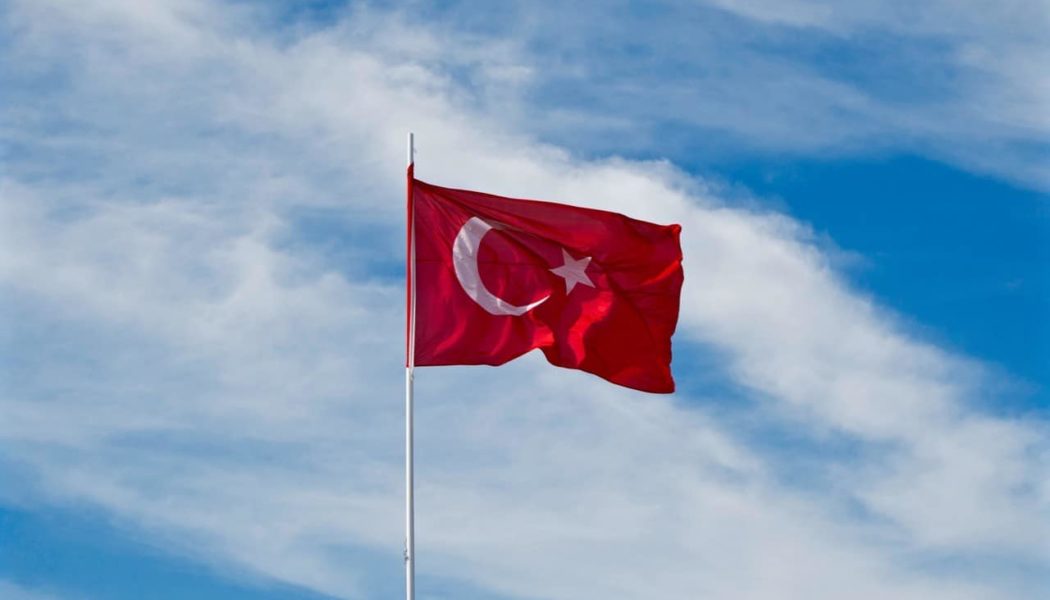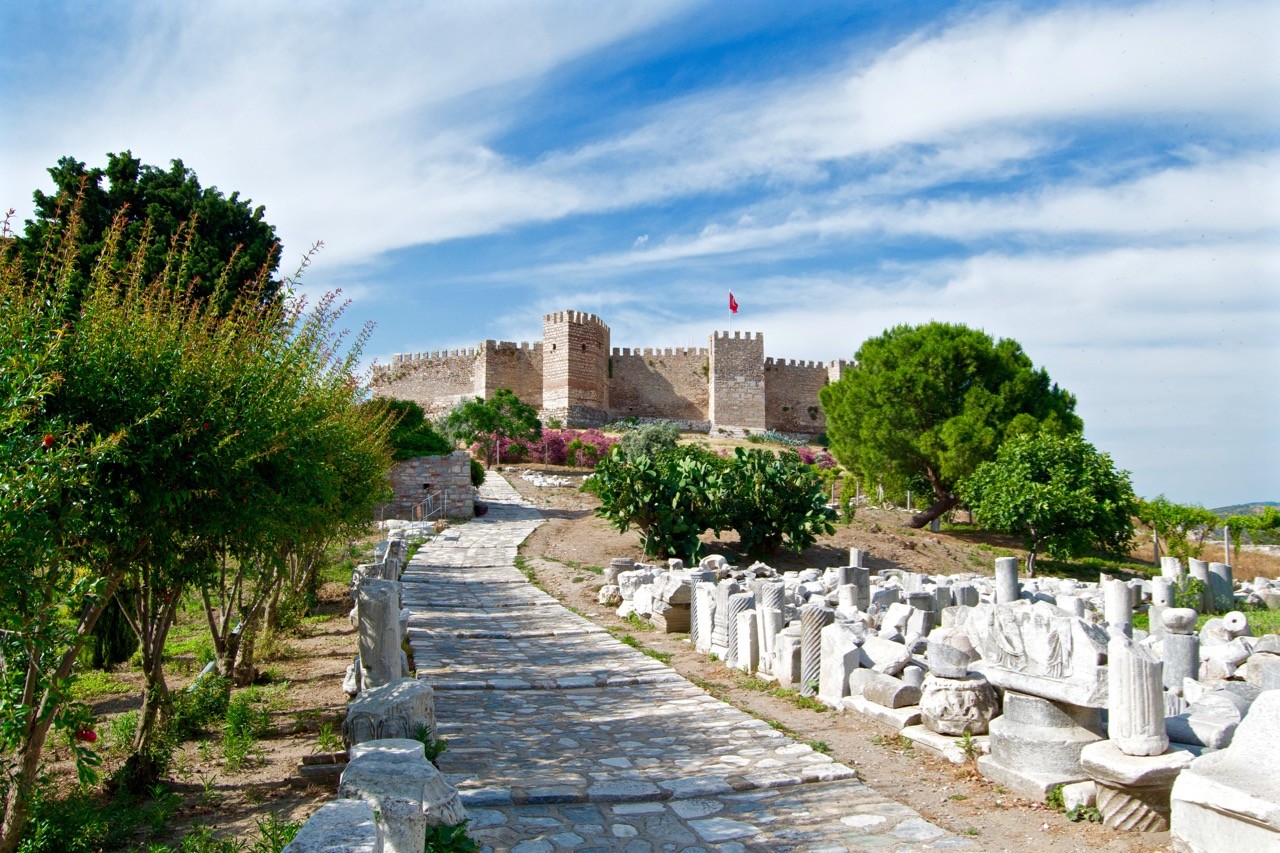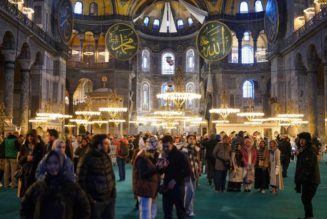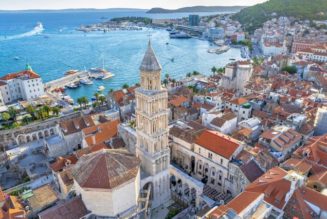Read our tips for visiting Ephesus, the best-preserved of Turkey’s remarkable array of ancient cities and classical ruins
Visiting Ephesus should be on every traveller’s Turkey itinerary. After more than 150 years of excavation, the city’s reclaimed and restored structures have made Ephesus Europe’s most complete ancient city.
The great city was built in the 10th century BC during the Classical Greek era and began to flourish after it came under the control of the Roman Republic in 129 BC. It’s estimated that the population of the city was at one point between 33,000 and 56,000 people.
So prosperous was Ephesus that its centrepiece, the marble Temple of Artemis, one of the original Seven Wonders of the World and once the largest temple on Earth. Today, the temple is a shadow of its former glory after being completely rebuilt three times before its eventual destruction during a raid by the Goths, an East Germanic tribe, in 401 AD.
Most of the remaining parts of the temple that were excavated were “transported” to the Ephesus Room at the British Museum following work by British archaeologists John Turtle Wood in 1869-1874 and David George Hogarth in 1904-1906.
Despite the loss of the Temple of Artemis, the UNESCO-listed site remains the best-preserved Roman city in the Mediterranean region, and one of Turkey’s top sights.
Below, we share our best tips for visiting Ephesus so you can make the most of your time at this remarkable site.
1. Check travel advice and if you need a visa
Turkey has had a tumultuous few years politically and only this week, was struck by two huge earthquakes killing thousands of people. However, that should not put you off visiting. We adored our time there and would encourage others to visit Turkey in a heartbeat.
That said, you should always check the latest advice from your country’s foreign office. Currently, the UK’s Foreign and Commonwealth Office does not have any travel alerts for the vast majority of the country.
When it comes to visas, not every traveller requires a visa to enter Turkey. Passport holders from selected countries, including the UK and several EU nations, can enter Turkey visa-free, usually for up to 90 days. However, citizens of several nations will need to arrange a visa prior to travel. The easiest way to do this is via an online eVisa.
eVisas are available for citizens of over 50 nations. Applications are straightforward, only take a few minutes and the only document required is a passport. The processing time is within 48 hours although a one-hour priority service is available. If for any reason the visa is denied, a full refund is issued. You can check fees and apply with Türkiye e-Visa.
2. PLAN YOUR VISIT
According to most estimates, Ephesus once had a population of between 33,000 and 56,000 during the Roman period. As it stands, only 20% of the city has been excavated. The uncovered section lies within an area of 4 sq km (1.5 sq mi) but still contains one of the largest collections of Roman ruins in the world.
To get the most out of visiting Ephesus, plan your approximate route before you arrive. If you just ‘turn up and see’, you could easily miss out on some of the best sights.
Consider taking an Ephesus travel guide with you on the day. We opted for our trusted companion, the Lonely Planet guide to Turkey.
3. GET THERE EARLY (OR LATE)
The best time for visiting Ephesus is the morning before most of the crowds arrive, including all the cruise day-trippers coming up from the coast. The other option is to arrive mid-afternoon as the crowds are thinning out. Even if you arrive in the afternoon there should be enough time to get around as long as you’ve planned your route.
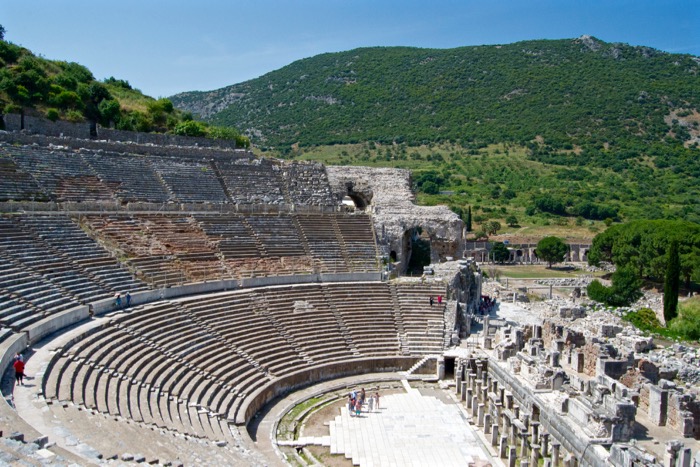
Another advantage of arriving earlier or later is that you can avoid the searing heat of the day between 12.00 and 15.00. Current opening times are 08:30-18:00 every day of the year. Check the official site for the latest updates and entrance fees.
4. Go straight to the main sights
As soon as you get in, make a beeline for the main sights. For us, the principal sights were the main façade of the Library of Celsus, the Ephesus amphitheatre and the main harbour street.
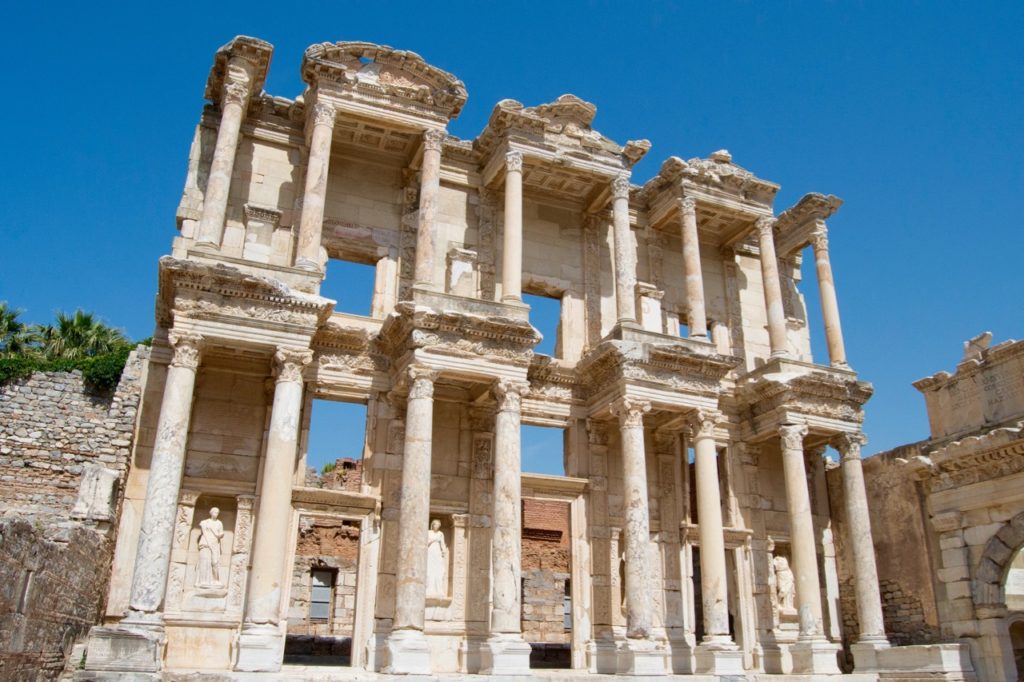
By heading straight to the main sights, we practically had them to ourselves, eluding the crowds and getting the photographs we wanted.
5. Start at the lower gate
We made the mistake of starting at the main Upper Gate and working our way to the Lower Gate and back again. We doubled back to make sure we hadn’t missed anything along the way as we had headed straight to the main sights first.

We suggest starting at the Lower Gate and looping back to it at the end of your visit. It is closer to Selçuk and therefore easier to reach if you want to walk in from town. The Lower Gate is also closer to the other sights outside of the walled ruins including the Isa Bey Mosque, Ayasoluk Castle, Ephesus Archaeological Museum and Temple of Artemis. It’s also cheaper if you’re travelling by public transport, as it’s closer to town.
6. TAKE PLENTY OF WATER
Ephesus is very hot, very dry and has little in the way of shade. To make matters worse, the heat reflects up off the white stone making it almost unbearable at times.
You will need plenty of water so take it with you. If (when!) you run out, you can buy some inside. It’s more expensive but this is not the time to skimp! There are small cafes and juice bars at each entrance along with toilets, information centres and friendly staff.
7. DRESS APPROPRIATELY
A sun hat, sunglasses and appropriate shoes are a must. The heat and sun are unrelenting so make sure you’re properly prepared. You’ll likely be doing a fair bit of walking and the stone floors are often slippery so flip-flops and sandals are far from ideal.
Even though Turkey is predominantly a Muslim country, Selçuk is not as traditional or strict as other Middle East countries or other sights in Turkey such as the Blue Mosque. With this in mind, it is acceptable to show your legs. Just make sure you pack plenty of sunscreen.
8. Pay extra to see the Terraced Houses
There is always a danger when visiting sites like these that one can get “templed out”. After a while, one very old temple can start to look like another very old temple, at least to the untrained eye. When we were first offered the additional ticket to the Terraced Houses I handed over the fee apprehensively. Was I just paying extra for access to another temple I may not remember afterwards?

Well, no. First of all the Terraced Houses are covered with protective roofing offering a welcome respite from the unrelenting heat. More importantly, they offer an insight into what ancient life was like for the residents of this once great city as well as a working demonstration of the archaeology and restoration still ongoing at Ephesus. The site offers a fascinating insight into some of the painstaking work that has taken place and continues today.
Entrance to the Terrace Houses costs 85 TL ($5 USD) and the opening hours (09.00-17.00) are shorter than the main site so make sure you give yourself time.
9. See the sights outside the city walls
There are several sights around Selçuk – outside of the Ephesus city walls – that are well worth a visit. The grand Ayasoluk Castle on Ayasoluk Hill is perhaps the most dramatic and rewarding. It offers unrivalled views across the city and countryside. The entrance ticket also includes access to the Basilica of St. John where the burial site of John the Apostle is believed to be located. Nearby is the calm and tranquil Isa Bey Mosque with its lush gardens and fountain court.
Additionally, there is the original wonder of the world, the Temple of Artemis. Just one lonely column (topped by a stork’s nest) remains of the original temple as most of the artefacts now reside in the British Museum in London. However, the original site is still worth visiting even if to just visualise the structure in its former glory.
Other nearby sights include the House of the Virgin Mary, the Ephesus Archaeological Museum and the Çamlık Railway Museum.
10. Don’t stay in the town centre
We chose not to stay in the Selçuk town centre, instead opting for a quiet hotel called Akay just a short walk up the hillside out of town. Not only was the area quieter and calmer than the touristy (and slightly tacky) town centre, but it also meant we were just moments from the other places of interest around Selçuk.
The aforementioned Ayasoluk Castle, Basilica of St. John and Isa Bey Mosque are all just a few minutes from the hotel by foot. There are some restaurants in the area and the main town is only a 10-minute walk away.
Tips for visiting Ephesus: the essentials
What: Tips for visiting Ephesus is to start at the Lower Gate in Turkey.
Where: We chose to stay at Akay Hotel, which is situated perfectly for visiting Ephesus as well as the other points of interest around Selçuk. It is close to Ayasoluk Castle, Basilica of St. John and Isa Bey Mosque, and just a 10-minute walk from the town centre and railway station.
The hotel has a welcoming swimming pool, a small bar offering cold drinks, snacks and beer, and even a pair of tortoises roaming the garden. The real draw, however, is the sweeping view of the surrounding town and countryside. Breakfast is served outside your room overlooking the view, so ask for a room on the upper floor.
Some staff have limited English but will go out of their way to assist with anything you need. Şükran had a dictionary close by and diligently wrote out phrases to make sure we understood each other properly.
When: The best time to visit Ephesus is spring (March to mid-June) when the weather is moderate and the days are long. Do note that you may get a day or two of rain, particularly in April. Despite it being milder than summer, do not underestimate the sun. Summer will definitely be hot and likely crowded, while winter can be cold and rainy.
How: Take a taxi from your hotel to either of the entrance gates. The Upper Gate should cost no more than 50 TL ($3 USD) and the Lower Gate 40 TL ($2.5 USD). The Ephesus entrance fee itself is 200 TL ($12 USD) with entrance to the Terraced Houses costing 85 TL ($5 USD).
If you want to visit the Ayasoluk Castle and Basilica of St. John (and you really should), then entrance costs 50 TL ($3 USD) and gets you into both sites. For more information, check the official website.
We arrived in Turkey at Istanbul’s Ataturk international airport and spent a few days in Istanbul before moving onto Selçuk. We took a domestic flight to Izmir (1hr) and then boarded a train to Selçuk (1hr 20mins).
The airport is international and has connections to a number of domestic destinations throughout Turkey. Book via Skyscanner for the best prices.
The trains proved very reliable and easy to use. For more information and booking options visit the Turkish State Railways website. We also used the train to continue on to Denizli to visit Pamukkale.
Enjoyed this post? pin it for later…

Lonely Planet Turkey is a comprehensive guide to the country and includes lots of tips for visiting Ephesus and Turkey in general.
